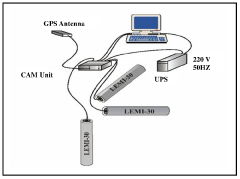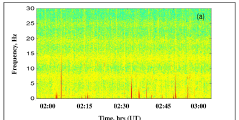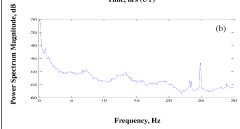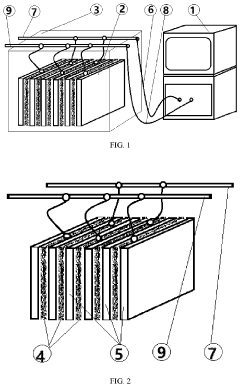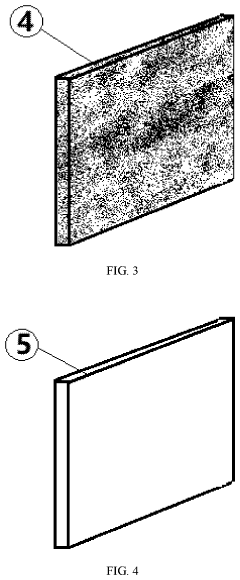Schumann Resonance Effect on Natural Phenomena
JUN 24, 20259 MIN READ
Generate Your Research Report Instantly with AI Agent
Patsnap Eureka helps you evaluate technical feasibility & market potential.
Schumann Resonance Background and Objectives
The Schumann resonance, discovered by physicist Winfried Otto Schumann in 1952, is a set of spectrum peaks in the extremely low frequency (ELF) portion of the Earth's electromagnetic field spectrum. This phenomenon occurs due to the resonance of electromagnetic waves within the cavity formed by the Earth's surface and the ionosphere. The fundamental frequency of this resonance is approximately 7.83 Hz, with harmonics at higher frequencies.
The study of Schumann resonance has evolved significantly since its discovery, with researchers exploring its potential impacts on various natural phenomena. Initially, the focus was primarily on understanding the basic principles and characteristics of these resonances. However, as technology advanced and our understanding deepened, the scope of research expanded to include potential correlations between Schumann resonances and a wide range of natural occurrences.
One of the primary objectives in researching the Schumann resonance effect on natural phenomena is to establish a comprehensive understanding of how these electromagnetic waves interact with the Earth's atmosphere, biosphere, and geosphere. This includes investigating potential links between Schumann resonances and weather patterns, seismic activity, and even biological processes in living organisms.
Another crucial aim is to develop more accurate models and measurement techniques for Schumann resonances. This is essential for distinguishing between natural variations in the resonance and those potentially caused by human activities or other external factors. Improved monitoring and analysis methods could lead to better predictions of natural phenomena and a deeper understanding of the Earth's electromagnetic environment.
Researchers are also exploring the possibility of using Schumann resonance measurements as a tool for early warning systems. For instance, some studies suggest that changes in Schumann resonance parameters might precede certain natural disasters, such as earthquakes or severe weather events. If confirmed, this could have significant implications for disaster preparedness and mitigation strategies.
Furthermore, there is growing interest in investigating the potential effects of Schumann resonances on human health and well-being. Some researchers hypothesize that these natural electromagnetic frequencies may influence circadian rhythms, cognitive function, and overall physiological processes in living organisms. While these claims remain controversial, they represent an intriguing area of interdisciplinary research combining physics, biology, and medicine.
As we continue to advance our understanding of the Schumann resonance and its effects on natural phenomena, the ultimate goal is to integrate this knowledge into broader Earth system models. This could potentially enhance our ability to predict and respond to various environmental changes and natural events, contributing to more effective climate modeling, weather forecasting, and ecological management strategies.
The study of Schumann resonance has evolved significantly since its discovery, with researchers exploring its potential impacts on various natural phenomena. Initially, the focus was primarily on understanding the basic principles and characteristics of these resonances. However, as technology advanced and our understanding deepened, the scope of research expanded to include potential correlations between Schumann resonances and a wide range of natural occurrences.
One of the primary objectives in researching the Schumann resonance effect on natural phenomena is to establish a comprehensive understanding of how these electromagnetic waves interact with the Earth's atmosphere, biosphere, and geosphere. This includes investigating potential links between Schumann resonances and weather patterns, seismic activity, and even biological processes in living organisms.
Another crucial aim is to develop more accurate models and measurement techniques for Schumann resonances. This is essential for distinguishing between natural variations in the resonance and those potentially caused by human activities or other external factors. Improved monitoring and analysis methods could lead to better predictions of natural phenomena and a deeper understanding of the Earth's electromagnetic environment.
Researchers are also exploring the possibility of using Schumann resonance measurements as a tool for early warning systems. For instance, some studies suggest that changes in Schumann resonance parameters might precede certain natural disasters, such as earthquakes or severe weather events. If confirmed, this could have significant implications for disaster preparedness and mitigation strategies.
Furthermore, there is growing interest in investigating the potential effects of Schumann resonances on human health and well-being. Some researchers hypothesize that these natural electromagnetic frequencies may influence circadian rhythms, cognitive function, and overall physiological processes in living organisms. While these claims remain controversial, they represent an intriguing area of interdisciplinary research combining physics, biology, and medicine.
As we continue to advance our understanding of the Schumann resonance and its effects on natural phenomena, the ultimate goal is to integrate this knowledge into broader Earth system models. This could potentially enhance our ability to predict and respond to various environmental changes and natural events, contributing to more effective climate modeling, weather forecasting, and ecological management strategies.
Market Applications of Schumann Resonance Research
The market applications of Schumann Resonance research have been expanding rapidly in recent years, driven by advancements in sensor technology and data analysis capabilities. One of the primary commercial sectors benefiting from this research is environmental monitoring and forecasting. Companies specializing in weather prediction and climate analysis are incorporating Schumann Resonance data into their models to improve long-term forecasting accuracy and enhance early warning systems for extreme weather events.
In the field of agriculture, Schumann Resonance monitoring is being utilized to develop more precise crop management systems. By correlating changes in the resonance with local weather patterns and soil conditions, farmers can optimize irrigation schedules, predict frost risks, and make informed decisions about planting and harvesting times. This application has the potential to significantly increase crop yields and reduce resource waste in the agricultural sector.
The healthcare industry is also exploring the potential of Schumann Resonance research. Some medical device manufacturers are developing products that claim to synchronize human biorhythms with the Earth's natural frequencies, based on the hypothesis that exposure to these resonances may have positive effects on human health. While the scientific evidence for these claims is still limited, there is a growing market for wellness products and therapies centered around the concept of "earthing" or "grounding."
In the realm of geophysical exploration, Schumann Resonance measurements are being integrated into advanced prospecting techniques. Mining and oil companies are using these data to complement traditional methods of identifying mineral deposits and hydrocarbon reserves. The subtle variations in the Earth's electromagnetic field, as detected through Schumann Resonance monitoring, can provide additional insights into subsurface structures and composition.
The telecommunications industry is also taking note of Schumann Resonance research, particularly in the development of long-range, low-frequency communication systems. By understanding and potentially harnessing these natural resonances, engineers are exploring new methods for global communication that could be more resilient to solar storms and other electromagnetic disturbances.
Lastly, the space weather monitoring sector is incorporating Schumann Resonance data into its suite of observational tools. Space agencies and satellite operators are using these measurements to better understand the interactions between solar activity and the Earth's ionosphere, which can affect the performance and lifespan of orbital assets. This application is becoming increasingly important as our reliance on satellite technology grows across various industries.
In the field of agriculture, Schumann Resonance monitoring is being utilized to develop more precise crop management systems. By correlating changes in the resonance with local weather patterns and soil conditions, farmers can optimize irrigation schedules, predict frost risks, and make informed decisions about planting and harvesting times. This application has the potential to significantly increase crop yields and reduce resource waste in the agricultural sector.
The healthcare industry is also exploring the potential of Schumann Resonance research. Some medical device manufacturers are developing products that claim to synchronize human biorhythms with the Earth's natural frequencies, based on the hypothesis that exposure to these resonances may have positive effects on human health. While the scientific evidence for these claims is still limited, there is a growing market for wellness products and therapies centered around the concept of "earthing" or "grounding."
In the realm of geophysical exploration, Schumann Resonance measurements are being integrated into advanced prospecting techniques. Mining and oil companies are using these data to complement traditional methods of identifying mineral deposits and hydrocarbon reserves. The subtle variations in the Earth's electromagnetic field, as detected through Schumann Resonance monitoring, can provide additional insights into subsurface structures and composition.
The telecommunications industry is also taking note of Schumann Resonance research, particularly in the development of long-range, low-frequency communication systems. By understanding and potentially harnessing these natural resonances, engineers are exploring new methods for global communication that could be more resilient to solar storms and other electromagnetic disturbances.
Lastly, the space weather monitoring sector is incorporating Schumann Resonance data into its suite of observational tools. Space agencies and satellite operators are using these measurements to better understand the interactions between solar activity and the Earth's ionosphere, which can affect the performance and lifespan of orbital assets. This application is becoming increasingly important as our reliance on satellite technology grows across various industries.
Current State and Challenges in Schumann Resonance Studies
Schumann resonance studies have made significant progress in recent years, yet they continue to face several challenges. The current state of research is characterized by a growing understanding of the phenomenon's complexity and its potential implications for various natural systems.
One of the primary advancements in this field is the improvement in detection and measurement techniques. High-sensitivity magnetometers and advanced signal processing algorithms have enhanced our ability to isolate Schumann resonance signals from background noise. This has led to more accurate measurements of resonance frequencies and their variations, providing researchers with higher quality data for analysis.
Despite these improvements, challenges persist in interpreting the data and establishing clear correlations between Schumann resonances and natural phenomena. The Earth's ionosphere, which plays a crucial role in the formation of these resonances, is a highly dynamic system influenced by numerous factors, including solar activity, geomagnetic storms, and even human-induced electromagnetic pollution. Disentangling the effects of these various influences remains a significant challenge for researchers.
Another area of ongoing research and debate is the potential impact of Schumann resonances on biological systems. While some studies suggest possible links between these resonances and certain physiological processes, the evidence remains largely inconclusive. The mechanisms by which extremely low-frequency electromagnetic fields might interact with living organisms are not yet fully understood, making it difficult to establish causal relationships.
The global nature of Schumann resonances presents both opportunities and challenges for researchers. On one hand, it allows for the study of large-scale atmospheric and ionospheric phenomena. On the other, it requires coordinated efforts across multiple observation stations worldwide to obtain comprehensive data. Establishing and maintaining such a global network of monitoring stations is a logistical and financial challenge.
Advancements in computational modeling have allowed for more sophisticated simulations of Schumann resonances and their interactions with the Earth-ionosphere cavity. However, these models still struggle to fully capture the complexity of the real-world system, particularly when it comes to predicting short-term variations in resonance parameters.
Looking ahead, one of the most promising areas of research is the potential use of Schumann resonances as a tool for monitoring global climate change. Changes in the Earth's temperature, humidity, and storm activity could potentially be reflected in long-term trends of Schumann resonance parameters. However, establishing reliable baselines and distinguishing climate-related signals from other sources of variation remains a significant challenge.
One of the primary advancements in this field is the improvement in detection and measurement techniques. High-sensitivity magnetometers and advanced signal processing algorithms have enhanced our ability to isolate Schumann resonance signals from background noise. This has led to more accurate measurements of resonance frequencies and their variations, providing researchers with higher quality data for analysis.
Despite these improvements, challenges persist in interpreting the data and establishing clear correlations between Schumann resonances and natural phenomena. The Earth's ionosphere, which plays a crucial role in the formation of these resonances, is a highly dynamic system influenced by numerous factors, including solar activity, geomagnetic storms, and even human-induced electromagnetic pollution. Disentangling the effects of these various influences remains a significant challenge for researchers.
Another area of ongoing research and debate is the potential impact of Schumann resonances on biological systems. While some studies suggest possible links between these resonances and certain physiological processes, the evidence remains largely inconclusive. The mechanisms by which extremely low-frequency electromagnetic fields might interact with living organisms are not yet fully understood, making it difficult to establish causal relationships.
The global nature of Schumann resonances presents both opportunities and challenges for researchers. On one hand, it allows for the study of large-scale atmospheric and ionospheric phenomena. On the other, it requires coordinated efforts across multiple observation stations worldwide to obtain comprehensive data. Establishing and maintaining such a global network of monitoring stations is a logistical and financial challenge.
Advancements in computational modeling have allowed for more sophisticated simulations of Schumann resonances and their interactions with the Earth-ionosphere cavity. However, these models still struggle to fully capture the complexity of the real-world system, particularly when it comes to predicting short-term variations in resonance parameters.
Looking ahead, one of the most promising areas of research is the potential use of Schumann resonances as a tool for monitoring global climate change. Changes in the Earth's temperature, humidity, and storm activity could potentially be reflected in long-term trends of Schumann resonance parameters. However, establishing reliable baselines and distinguishing climate-related signals from other sources of variation remains a significant challenge.
Existing Methods for Measuring Schumann Resonances
01 Devices for generating Schumann resonance
Various devices have been developed to generate or simulate Schumann resonance frequencies. These devices are designed to produce electromagnetic fields that mimic the natural Earth's resonance, which is believed to have potential health benefits. The devices may include coils, antennas, or other electromagnetic components to create the desired frequencies.- Devices for generating Schumann resonance: Various devices have been developed to generate or simulate Schumann resonance frequencies. These devices are designed to produce electromagnetic fields that mimic the natural Earth's resonance, which is believed to have potential health benefits. The devices may include coils, antennas, or other electromagnetic components to create the desired frequencies.
- Therapeutic applications of Schumann resonance: Schumann resonance has been explored for its potential therapeutic effects on human health and well-being. Applications include stress reduction, improved sleep quality, and enhanced overall wellness. Devices and methods have been developed to expose individuals to Schumann resonance frequencies in controlled environments or through wearable technology.
- Measurement and detection of Schumann resonance: Instruments and methods have been developed to measure and detect Schumann resonance frequencies in the environment. These tools are used for scientific research, environmental monitoring, and potential applications in forecasting natural phenomena. The measurement devices often incorporate sensitive antennas and signal processing techniques to isolate the weak Schumann resonance signals from background noise.
- Integration of Schumann resonance in electronic devices: Efforts have been made to incorporate Schumann resonance generators or simulators into various electronic devices and appliances. This integration aims to provide potential health benefits or improve the user experience in everyday products such as air purifiers, lighting systems, or personal electronic devices.
- Schumann resonance in electromagnetic shielding: Research has been conducted on the use of Schumann resonance principles in electromagnetic shielding applications. This includes developing materials or structures that can protect against harmful electromagnetic radiation while potentially preserving or enhancing the beneficial effects associated with Schumann resonance frequencies.
02 Therapeutic applications of Schumann resonance
The Schumann resonance effect has been explored for potential therapeutic applications. Devices and methods have been developed to utilize these frequencies for improving human health and well-being. These applications may include stress reduction, sleep improvement, and overall wellness enhancement.Expand Specific Solutions03 Measurement and detection of Schumann resonance
Instruments and systems have been designed to measure and detect Schumann resonance frequencies in the environment. These devices may include specialized sensors, antennas, and signal processing components to accurately capture and analyze the low-frequency electromagnetic signals associated with the Schumann resonance.Expand Specific Solutions04 Integration of Schumann resonance in consumer products
The concept of Schumann resonance has been incorporated into various consumer products. These may include wearable devices, home appliances, or personal accessories designed to expose users to Schumann resonance frequencies. The goal is to provide potential health benefits or create a more natural electromagnetic environment.Expand Specific Solutions05 Research on Schumann resonance effects
Ongoing research is being conducted to better understand the effects of Schumann resonance on biological systems and the environment. This includes studies on potential impacts on human health, cognitive function, and the Earth's electromagnetic field. Various experimental setups and methodologies have been developed to investigate these effects.Expand Specific Solutions
Key Players in Schumann Resonance Research
The research on the Schumann Resonance Effect on Natural Phenomena is in an exploratory phase, with a growing market as interest in Earth's electromagnetic field interactions increases. The technology's maturity is still developing, with various institutions contributing to its advancement. Universities like Hangzhou Dianzi University, Jilin University, and the University of Bern are leading academic research, while companies such as FUJIFILM Corp. and Intel Corp. may be exploring potential applications. The involvement of diverse entities, including Neuroenhancement Lab LLC and Schlumberger Technology BV, suggests a multidisciplinary approach, combining expertise in geophysics, electronics, and environmental sciences to unravel the complexities of this natural phenomenon and its potential impacts.
University of Bern
Technical Solution: The University of Bern has developed a unique approach to studying the Schumann Resonance effect on natural phenomena. Their research team has created a specialized Schumann Resonance Tomography (SRT) system, which uses a global network of receivers to create 3D maps of Schumann Resonance intensity variations. This innovative technique allows them to study how these resonances interact with various atmospheric and geological processes. They have particularly focused on investigating the potential links between Schumann Resonances and seismic activity, as well as their possible influence on weather patterns and climate change.
Strengths: Innovative tomography technique, global perspective on Schumann Resonance effects, interdisciplinary research approach. Weaknesses: Relatively new technology that may require further validation and refinement.
National Taiwan University
Technical Solution: National Taiwan University has been conducting cutting-edge research on the Schumann Resonance effect on natural phenomena, with a particular focus on its implications for earthquake prediction and monitoring. Their approach involves using a combination of ground-based and satellite-based measurements to study the correlations between Schumann Resonance anomalies and seismic activity. They have developed advanced signal processing algorithms to extract Schumann Resonance signatures from noisy electromagnetic data and have been working on integrating this information into existing earthquake early warning systems. Additionally, they are exploring the potential effects of Schumann Resonances on ionospheric dynamics and their implications for radio wave propagation and communication systems.
Strengths: Strong focus on practical applications, particularly in earthquake monitoring; advanced signal processing capabilities. Weaknesses: Geographically limited study area, which may affect the generalizability of findings to other regions.
Core Innovations in Schumann Resonance Analysis
Noval strategy of schumann resonance phenomena at a low latitude stationand their estabilishment thereof
PatentInactiveIN202011054143A
Innovation
- The use of three-component search coil magnetometers (LEMI-30) installed at low latitude stations to measure magnetic field variations, combined with GPS synchronization and data analysis using MATLAB, to record and analyze Schumann resonance phenomena, allowing for the isolation of Schumann signals and correlation with ground surface temperature for environmental monitoring.
Carbon allotrope composite field effect artificial aurora generating device
PatentActiveUS20200406223A1
Innovation
- A carbon allotrope composite field effect artificial aurora generating device using foamed nickel or carbon fiber substrates with a carbon allotrope composite, producing high-energy charged particles through Schumann resonance and low-frequency electric fields, which are used to excite auroras and generate active oxygen for pollution reduction.
Environmental Factors Affecting Schumann Resonances
The Schumann resonances, a set of spectrum peaks in the extremely low frequency (ELF) portion of the Earth's electromagnetic field spectrum, are significantly influenced by various environmental factors. These factors play a crucial role in modulating the resonances' characteristics, including their frequency, amplitude, and overall behavior.
One of the primary environmental factors affecting Schumann resonances is the global lightning activity. As the main excitation source of these resonances, variations in lightning occurrence and intensity directly impact the strength and stability of the Schumann resonances. Seasonal changes in lightning distribution, particularly the shift of thunderstorm activity between the Northern and Southern hemispheres, lead to observable fluctuations in resonance parameters.
Solar activity also exerts a considerable influence on Schumann resonances. During periods of high solar activity, such as solar flares and coronal mass ejections, the ionosphere's conductivity and height are altered. These changes affect the propagation of electromagnetic waves in the Earth-ionosphere cavity, subsequently modifying the Schumann resonance characteristics.
Atmospheric conditions, including temperature, humidity, and pressure, contribute to the variability of Schumann resonances. These factors influence the conductivity of the lower atmosphere and can affect the propagation of ELF waves. For instance, changes in the water vapor content of the atmosphere can lead to variations in the resonance frequencies and amplitudes.
Geomagnetic activity, closely linked to solar activity, is another significant environmental factor. Geomagnetic storms can cause disturbances in the ionosphere, leading to alterations in the Earth-ionosphere cavity's properties. These disturbances can result in temporary shifts in Schumann resonance frequencies and amplitudes.
The Earth's magnetic field itself plays a role in shaping Schumann resonances. Local and global variations in the geomagnetic field can influence the propagation of ELF waves, affecting the resonance patterns observed at different locations on the planet.
Human activities, particularly large-scale industrial operations and power grid systems, can also impact Schumann resonances. Electromagnetic emissions from these sources may interfere with the natural resonance signals, potentially altering their characteristics in certain regions.
Understanding these environmental factors and their complex interactions is crucial for accurately interpreting Schumann resonance data and its potential applications in various fields, including climate monitoring, earthquake prediction, and global lightning activity assessment.
One of the primary environmental factors affecting Schumann resonances is the global lightning activity. As the main excitation source of these resonances, variations in lightning occurrence and intensity directly impact the strength and stability of the Schumann resonances. Seasonal changes in lightning distribution, particularly the shift of thunderstorm activity between the Northern and Southern hemispheres, lead to observable fluctuations in resonance parameters.
Solar activity also exerts a considerable influence on Schumann resonances. During periods of high solar activity, such as solar flares and coronal mass ejections, the ionosphere's conductivity and height are altered. These changes affect the propagation of electromagnetic waves in the Earth-ionosphere cavity, subsequently modifying the Schumann resonance characteristics.
Atmospheric conditions, including temperature, humidity, and pressure, contribute to the variability of Schumann resonances. These factors influence the conductivity of the lower atmosphere and can affect the propagation of ELF waves. For instance, changes in the water vapor content of the atmosphere can lead to variations in the resonance frequencies and amplitudes.
Geomagnetic activity, closely linked to solar activity, is another significant environmental factor. Geomagnetic storms can cause disturbances in the ionosphere, leading to alterations in the Earth-ionosphere cavity's properties. These disturbances can result in temporary shifts in Schumann resonance frequencies and amplitudes.
The Earth's magnetic field itself plays a role in shaping Schumann resonances. Local and global variations in the geomagnetic field can influence the propagation of ELF waves, affecting the resonance patterns observed at different locations on the planet.
Human activities, particularly large-scale industrial operations and power grid systems, can also impact Schumann resonances. Electromagnetic emissions from these sources may interfere with the natural resonance signals, potentially altering their characteristics in certain regions.
Understanding these environmental factors and their complex interactions is crucial for accurately interpreting Schumann resonance data and its potential applications in various fields, including climate monitoring, earthquake prediction, and global lightning activity assessment.
Interdisciplinary Implications of Schumann Resonance Studies
The study of Schumann Resonances has far-reaching implications across multiple scientific disciplines, extending beyond its traditional domain in atmospheric science and geophysics. These low-frequency electromagnetic waves, resonating in the Earth-ionosphere cavity, have been found to intersect with various fields of research, opening new avenues for interdisciplinary exploration.
In the realm of biology and medicine, researchers have begun investigating potential correlations between Schumann Resonances and human health. Some studies suggest that these natural electromagnetic frequencies may influence circadian rhythms and other physiological processes. This has led to increased interest in the possible effects of Schumann Resonances on human well-being and the development of therapeutic applications.
Environmental science has also benefited from Schumann Resonance research. These resonances serve as a global indicator of lightning activity and can provide insights into climate change and severe weather patterns. By monitoring variations in Schumann Resonances, scientists can track global temperature changes and potentially predict extreme weather events.
In the field of space weather, Schumann Resonances offer a unique perspective on solar-terrestrial interactions. Fluctuations in these resonances can be linked to solar activity, providing valuable data for understanding the complex relationship between the Sun and Earth's upper atmosphere. This knowledge is crucial for protecting satellite communications and power grids from solar-induced disturbances.
Geologists have found applications for Schumann Resonance studies in earthquake prediction and monitoring. Some research suggests that changes in these resonances may precede seismic activity, potentially offering a new tool for early warning systems. While still controversial, this area of study highlights the potential for Schumann Resonances to contribute to disaster preparedness.
The field of cognitive science has also shown interest in Schumann Resonances, with some researchers exploring potential links between these natural frequencies and brain wave patterns. This has led to speculation about the role of Earth's electromagnetic environment in human consciousness and cognitive function, though more research is needed to establish concrete connections.
As Schumann Resonance research continues to evolve, it is likely to foster even more interdisciplinary collaborations. The integration of data from these studies with other scientific fields promises to enhance our understanding of the complex interactions between the Earth's electromagnetic environment and various natural phenomena. This cross-pollination of ideas and methodologies may lead to innovative solutions for global challenges and advance our comprehension of the intricate systems that govern our planet.
In the realm of biology and medicine, researchers have begun investigating potential correlations between Schumann Resonances and human health. Some studies suggest that these natural electromagnetic frequencies may influence circadian rhythms and other physiological processes. This has led to increased interest in the possible effects of Schumann Resonances on human well-being and the development of therapeutic applications.
Environmental science has also benefited from Schumann Resonance research. These resonances serve as a global indicator of lightning activity and can provide insights into climate change and severe weather patterns. By monitoring variations in Schumann Resonances, scientists can track global temperature changes and potentially predict extreme weather events.
In the field of space weather, Schumann Resonances offer a unique perspective on solar-terrestrial interactions. Fluctuations in these resonances can be linked to solar activity, providing valuable data for understanding the complex relationship between the Sun and Earth's upper atmosphere. This knowledge is crucial for protecting satellite communications and power grids from solar-induced disturbances.
Geologists have found applications for Schumann Resonance studies in earthquake prediction and monitoring. Some research suggests that changes in these resonances may precede seismic activity, potentially offering a new tool for early warning systems. While still controversial, this area of study highlights the potential for Schumann Resonances to contribute to disaster preparedness.
The field of cognitive science has also shown interest in Schumann Resonances, with some researchers exploring potential links between these natural frequencies and brain wave patterns. This has led to speculation about the role of Earth's electromagnetic environment in human consciousness and cognitive function, though more research is needed to establish concrete connections.
As Schumann Resonance research continues to evolve, it is likely to foster even more interdisciplinary collaborations. The integration of data from these studies with other scientific fields promises to enhance our understanding of the complex interactions between the Earth's electromagnetic environment and various natural phenomena. This cross-pollination of ideas and methodologies may lead to innovative solutions for global challenges and advance our comprehension of the intricate systems that govern our planet.
Unlock deeper insights with Patsnap Eureka Quick Research — get a full tech report to explore trends and direct your research. Try now!
Generate Your Research Report Instantly with AI Agent
Supercharge your innovation with Patsnap Eureka AI Agent Platform!
